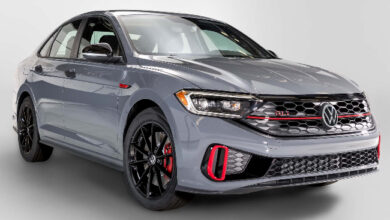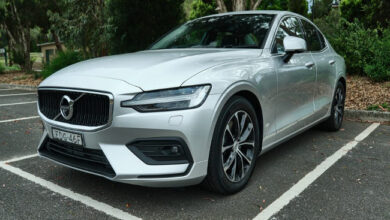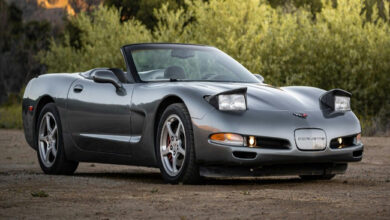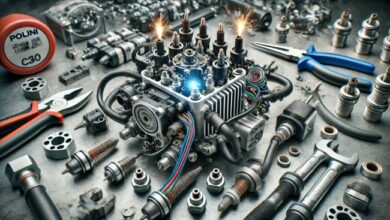C3 Corvette: The Iconic American Sports Car of the 60s and 70s
Exploring the Legacy, Design, and Performance of the Corvette C3
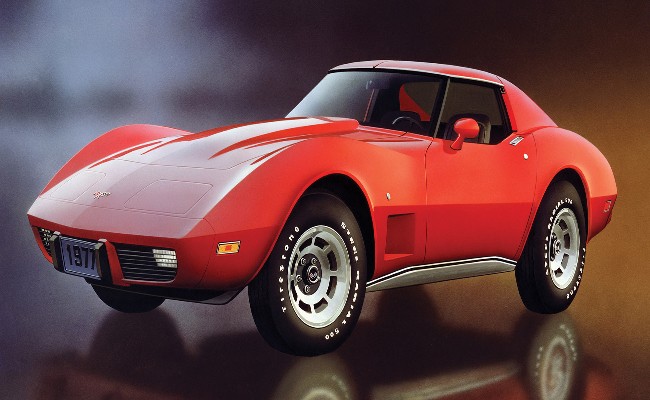
The C3 Corvette, often revered as one of the most iconic American sports cars, made its debut in 1968 and quickly became a symbol of automotive excellence. This third-generation Corvette, produced until 1982, captivated car enthusiasts with its aggressive styling, powerful engine options, and groundbreaking innovations. From its unmistakable shark-like front end to its roaring V8 engines, the C3 Corvette defined an era of American muscle and remains a beloved classic to this day.
Introduction to the C3 Corvette
A New Era for Corvette
The Corvette C3 marked a significant evolution in the Corvette lineage, following in the footsteps of the C1 and C2 generations. With its introduction in 1968, the C3 brought forth a design overhaul that emphasized both performance and style. The car’s sleek, aerodynamic lines, T-top roof, and long, swooping curves were a radical departure from its predecessors. This new look, combined with advanced engineering, set the stage for what would become one of the most successful and enduring sports cars in American history.
Design and Aesthetics
The Shark-Inspired Styling
The C3 Corvette was heavily influenced by the Mako Shark II concept car, designed by Larry Shinoda under the guidance of Bill Mitchell, GM’s Vice President of Design. This inspiration is evident in the car’s elongated front nose, flared wheel arches, and distinctive side gills. The “Coke bottle” shape, with its narrow waist and bulging fenders, became a defining characteristic of the C3. The design was not just about aesthetics; it also contributed to the car’s improved aerodynamics, helping it achieve higher speeds with greater stability.
Interior Innovation
Inside the C3 Corvette, drivers were greeted with a cockpit-style interior that emphasized comfort and control. The wraparound dashboard, deeply recessed gauges, and ergonomically designed seats gave the car a driver-centric feel. Over the years, the interior saw numerous updates, including the introduction of leather seats, power windows, and improved sound insulation, making the C3 not only a performance machine but also a comfortable grand tourer.
Performance and Engineering
Engine Options and Powertrain
The C3 Corvette was known for its powerful engine options, which played a crucial role in its reputation as a high-performance vehicle. Initially, the car was offered with a range of V8 engines, including the small-block 327 and the big-block 427. These engines produced impressive horsepower, with the top-tier L88 427 V8 delivering a staggering 430 hp. In 1970, the introduction of the LS5 454 V8 further solidified the C3’s status as a muscle car icon.
Suspension and Handling
To complement its powerful engines, the C3 Corvette featured an advanced suspension system that provided excellent handling and ride quality. The car was equipped with an independent rear suspension, which was a carryover from the C2 generation but with several refinements. This setup, combined with front disc brakes and power steering, allowed the C3 to deliver a driving experience that was both exhilarating and controlled. The C3’s handling prowess was further enhanced by its near-perfect weight distribution, making it a formidable contender on both the road and the track.
The Evolution of the Corvette C3
Early Years (1968-1972)
The initial years of the C3 Corvette were marked by continuous improvements and updates. The 1968 model, while praised for its design, faced some criticism for build quality issues. However, Chevrolet quickly addressed these concerns, and by 1969, the C3 had established itself as a reliable and desirable sports car. The introduction of the ZR1 performance package in 1970, which included the high-revving LT1 small-block engine, showcased the car’s racing pedigree. During this period, the C3 also saw the introduction of the Turbo-Hydramatic automatic transmission, making the car more accessible to a broader audience.
Mid-Life Updates (1973-1977)
The mid-1970s brought significant changes to the C3 Corvette, driven by new safety and emissions regulations. The 1973 model year introduced a new front bumper made of urethane, replacing the previous chrome design, which marked the beginning of the “rubber bumper” era. This change was not only a response to federal safety standards but also gave the car a more modern look. Engine power began to decrease during this period due to stricter emissions regulations, but Chevrolet compensated by focusing on improving ride comfort and interior refinement.
Later Years and Special Editions (1978-1982)
The final years of the C3 Corvette saw the introduction of several special editions and continued refinements. The 1978 model year, which marked the Corvette’s 25th anniversary, introduced a new fastback rear window, improving both aesthetics and cargo space. The same year also saw the release of the limited-edition Indy 500 Pace Car replica, which became an instant collector’s item. In 1980, the C3 underwent a significant weight reduction, thanks to the use of lighter materials and improved aerodynamics. The final year of production, 1982, introduced the “Cross-Fire Injection” system, an early form of fuel injection that improved fuel economy and emissions.
The Corvette C3 in Popular Culture
A Symbol of American Muscle
The C3 Corvette became an icon of American culture, symbolizing freedom, performance, and the open road. Its appearance in numerous movies, television shows, and music videos cemented its status as a cultural icon. The car’s distinctive design and roaring engines made it a favorite among enthusiasts and collectors alike. The C3’s legacy is further solidified by its continued presence at car shows, auctions, and in private collections, where it remains a symbol of the golden age of American muscle cars.
Racing Heritage
Beyond its cultural impact, the C3 Corvette also enjoyed a successful racing career. The car’s lightweight fiberglass body, combined with its powerful engines and advanced suspension, made it a formidable competitor on the track. The C3’s racing pedigree was highlighted by its participation in events such as the 24 Hours of Le Mans, where it competed against some of the world’s most prestigious sports cars. The Corvette Racing team, with its factory-backed entries, achieved numerous victories with the C3, further cementing its status as a performance icon.
Conclusion: The Enduring Legacy of the C3 Corvette
The C3 Corvette is more than just a car; it’s a symbol of an era. From its groundbreaking design to its powerful engines, the C3 captured the hearts of car enthusiasts around the world. Its influence can still be seen today, not only in the continued popularity of the Corvette brand but also in the enduring passion of its fanbase. Whether on the road, at a car show, or on the racetrack, the C3 Corvette remains a testament to American ingenuity and the pursuit of automotive excellence.
Understanding the Difference: C3 Corvette vs. Corvette C3
The terms “C3 Corvette” and “Corvette C3” are often used interchangeably, but they both refer to the same third-generation Corvette. The “C3” designation simply stands for “Corvette, Third Generation,” and both terms are correct when referring to this iconic vehicle. Whether you’re discussing its performance, design, or cultural impact, the C3 Corvette remains a legendary model in the history of American sports cars.
